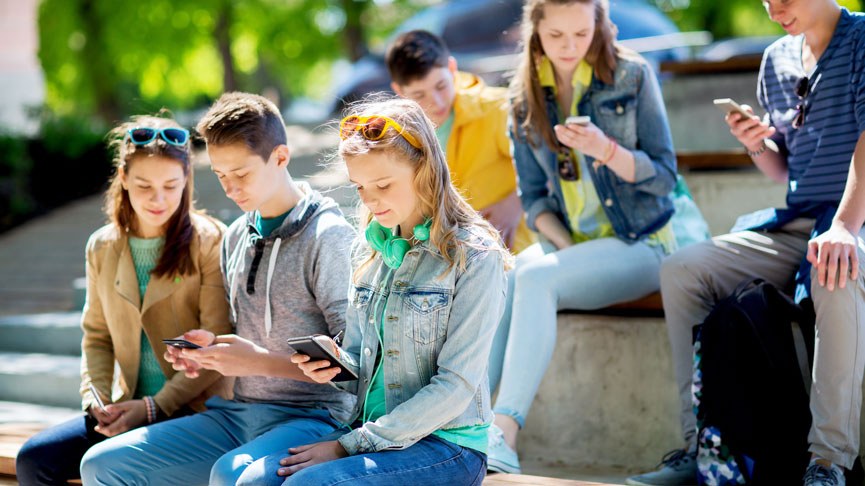Social media: how upward comparisons and well-being are related in children and adolescents

"We have seen that through the use of social media, children and adolescents are constantly exposed to comparisons with people they consider to be socially better off - who they find prettier, for example, or who seem to them to be wealthier, more popular and happier," explains Dr. Andrea Irmer, the DIPF researcher in charge of the study. She adds, "We were also able to show that these upward social comparisons are related to the well-being of children and adolescents. So the more they were confronted with the alleged better lives of others on social media, the worse they felt." Not only that, "Our research further found that upward comparisons established the link between social media use and lower well-being. So they seem to be a central factor," Irmer said.
The study
The DIPF researchers conducted the study with a total of 200 children and adolescents aged 10 to 14 and one parent each. Online questionnaires were used, which the participants could fill out at home in their daily lives. The survey comprised four parts: (1.) First, parents were asked to provide information about the background of their children and adolescents - for example, about their personality and their siblings. (2.) In addition, participating children and adolescents gave a basic self-assessment about their well-being and personality, as well as how they use the social media platforms Instagram, TikTok and YouTube.
(3.) Then, for 14 days the participants daily answered questions about their social media use that day, the upward comparisons they experienced, and their well-being. The variables were thereby answered on 5-point scales. The researchers assessed well-being with two dimensions: an assessment of self-worth and an assessment of mood. The online link to the survey was sent to the children and adolescents each evening - with instructions to complete it shortly before going to bed. (4.) Finally, the test persons filled out a questionnaire on aspects such as those under (2.).
For the statistical analysis, the researchers used multilevel structural equation models to analyze the relations among the variables. Overall, they proceeded in two ways: First, they compared children with each other (scientific term: interindividual). In doing so, they investigated whether children who used more social media than other children across the 14 days of the study also reported lower well-being. On the other hand, the researchers looked at each child individually - virtually detached from the others - and on each day (intraindividual). Here, they analyzed whether the child reported lower well-being on days when he or she used more social media than usual. The researchers also examined the role of upward comparisons in these two ways. They hope the intraindividual approach will provide more information about ways to support children as needed.
Findings
Social media use and well-being: Comparing children with each other, the researchers concluded that participants who used more social media reported lower self-worth and more negative mood. Analyzing the daily individual level, the researchers also found that participants reported lower self-worth when they used more social media, but not generally worse mood.
Occurrence of upward comparisons and their relations to well-being: Social media use was associated with upward social comparisons. These upward comparisons were linked with lower self-worth and more negative mood in the group average as well as in daily individual observations.
Role of upward comparisons: The DIPF team then found out that it were the upward comparisons that established (mediated) the relations between general social media use and well-being. This was true for both dimensions of well-being when comparing children to each other; it was only true for self-worth when looking at individual children at a daily level.
Dr. Irmer states: "Depending on the method of analysis, there is at least a link between the use of social media and the self-worth of children and adolescents. And the upward social comparisons that take place on social media play a decisive role here."
Implications
Previous research on the relations between social media and well-being has sometimes yielded mixed results. The new DIPF findings and thus the inclusion of the variable " upward social comparisons" may help to better explain this heterogeneity. Andrea Irmer also mentions potential pedagogical implications: "It could make sense to educate children and adolescents more about the fact that social media do not depict the complete reality, and instead that there is much more of a tendency among many actors to present themselves in a particularly positive light - even to the point of using filters to enhance facial proportions."
At the same time, the researchers caution that additional studies are needed to consolidate the new findings and to better understand the causality of effects. Furthermore, the results could have been influenced by the fact that mainly children from socially better-off families participated in the study and that the investigation focused on social media with primarily visual content. Other variables that have not been considered so far - such as social interaction among friends - could also be important.
The entire scientific paper on the study is freely available online
Irmer, A., Schmiedek, F. (2023) Associations between youth’s daily social media use and well-being are mediated by upward comparisons. Communications Psychology, 1, 12. https://doi.org/10.1038/s44271-023-00013-0
Contact
Study: Dr. Andrea Irmer, +49 (0)69 24708-159, YS5pcm1lckBkaXBmLmRl
Press: Philip Stirm, DIPF, +49 (0)69 24708-123, cC5zdGlybUBkaXBmLmRl, cHJAZGlwZi5kZQ==